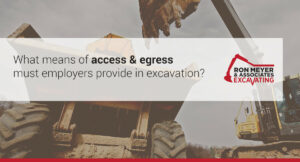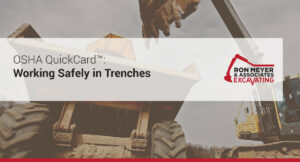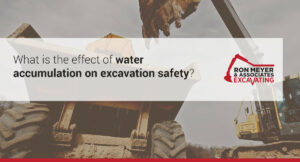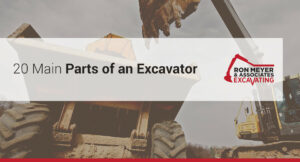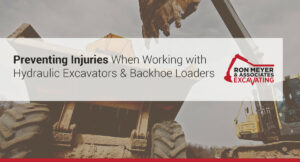OSHA requires employers to provide ladders, steps, ramps, or other safe means of egress for workers working in trench excavations 4 feet (1.22 meters) or deeper. The means of egress must be located so as not to require workers to travel more than 25 feet (7.62 meters) laterally within the trench. Any structural ramps used […]
OSHA QuickCard™: Working Safely in Trenches
Working Safely in Trenches When done safely, trenching operations can reduce worker exposure to cave-ins, falling loads, hazardous atmospheres, and hazards from mobile equipment. OSHA standards require that trenches and protective systems be inspected daily and as conditions change by a competent person before work begins. Never enter a trench unless: It has been properly […]
What is the effect of water accumulation on excavation safety?
Water accumulation in an excavation can undermine the sides of the excavation and make it more difficult for workers to get out of the excavation. The OSHA standards prohibit employers from allowing workers to enter an excavation where water has accumulated or is accumulating unless adequate precautions are taken to protect workers. Such precautions can […]
What is the difference between an excavation and a trench?
OSHA defines an excavation as any man-made cut, cavity, trench, or depression in the Earth’s surface formed by earth removal. A trench is defined as a narrow excavation (in relation to its length) made below the surface of the ground. In general, the depth of a trench is greater than its width, but the width […]
20 Main Parts of an Excavator
Excavators (hydraulic) are heavy construction equipment consisting of a boom, dipper (or stick), bucket and cab on a rotating platform known as the “house”. The house sits atop an undercarriage with tracks or wheels. All movement and functions of a hydraulic excavator are accomplished through the use of hydraulic fluid, with hydraulic cylinders and hydraulic motors. […]
Preventing Injuries When Working with Hydraulic Excavators & Backhoe Loaders
Workers who operate or work near hydraulic excavators and backhoe loaders are at risk of being struck by the machine or its components or by excavator buckets that detach from the excavator stick. NIOSH recommends that injuries and deaths be prevented through training, proper installation and maintenance, work practices, and personal protective equipment. Employers should […]
- « Previous Page
- 1
- …
- 12
- 13
- 14
- 15
- 16
- …
- 20
- Next Page »
